Best
Budget-Friendly Clarinet
-
Overall: Made with ABS and Ebonite composite construction
-
Best Feature: Comes with a silver-plated keyword
-
TedScore™: 7/10
Best
Clarinet
-
Overall: Built with a bore design based on the popular E13 clarinet from Buffet
-
Best Feature: Created from co-polymeric ABS instead of wood, which requires less maintenance
-
TedScore™: 9/10
Best
Student
Clarinet
-
Overall: Durable body with an attractive matte finish
-
Best Feature: Has an adjustable thumb-rest for proper technique
-
TedScore™: 8/10
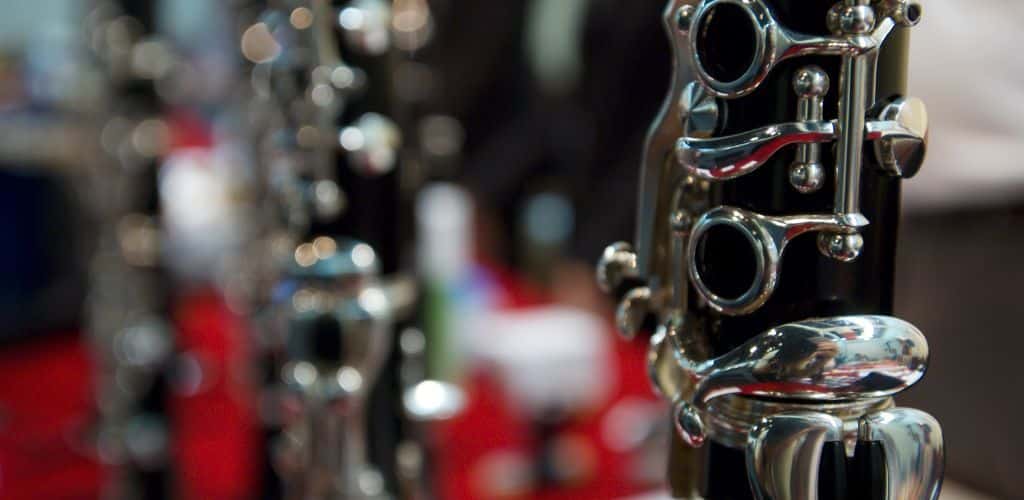
Ready to understand the world of the clarinet? Look no further!
From the jazzy sounds of Benny Goodman to the classical stylings of Mozart, the clarinet has been captivating audiences for centuries. But did you know there’s a whole family of clarinets, each with a unique sound and personality?
Get ready to uncover the secrets of the clarinet instrument family and discover everything you need to know about these fascinating instruments.
Whether you’re a seasoned musician or a curious beginner, this is the ultimate guide to the clarinet family that will have you tapping your feet and humming along in no time!
Overview of the
Clarinet Family

The clarinet is a woodwind instrument played by blowing air through a reed.
Its long, thin body and flared bell make it look super cool. When you play it, the reed vibrates against the mouthpiece to create a unique sound in orchestras, concert bands, and jazz ensembles.
But wait, there’s more! Have you heard of the bass clarinet? It’s like a giant version of the clarinet that produces a low, rich sound.
Or how about the A clarinet, which has a slightly higher pitch and a brighter tone? And don’t forget about the contrabass clarinet, which is the family’s biggest member and produces a super deep, bassy sound.
The clarinet family is full of surprises, like the D clarinet that produces a higher, delicate sound, and the alto clarinet that’s like a smaller version of the bass clarinet with a middle-range sound.
So, whether you’re playing in an orchestra, concert band, or jazz ensemble, there’s a clarinet that will fit your vibe.
History of the
Clarinet Family
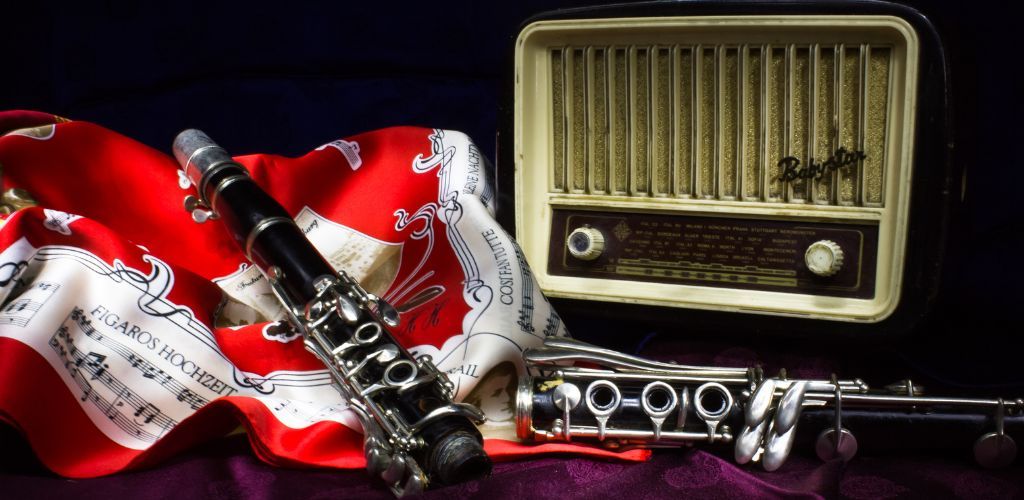
The clarinet family is a group of woodwind instruments that have existed since the early 18th century. Johann Christoph Denner, a German instrument maker from Nuremberg, invented the clarinet. However, the chalumeau, a similar instrument, was already in existence.
Denner improved upon the chalumeau by creating a longer instrument that allowed musicians to reach higher notes by playing partials, thus extending the range of the instrument.
This new instrument, the clarinet, had a nearly cylindrical bore and a flared bell.
The clarinet quickly gained popularity and became a staple in orchestras and military bands.

Wolfgang Amadeus Mozart was one of the first composers to write music specifically for the clarinet, and his Clarinet Concerto in A Major is still a popular piece today.
The clarinet continued to evolve throughout the 19th and 20th centuries.
New materials, such as metal and plastic, were used to make clarinets, and new keys and mechanisms were added to improve intonation and playability.
Today, the clarinet family is the largest woodwind family, ranging from the BB♭ contrabass to the E♭ soprano.
The clarinet is still widely used in orchestras, jazz bands, and other musical ensembles. Its unique sound and versatility make it a beloved instrument among musicians and music lovers.
Common Types of Clarinets
When most people think of the clarinet, they usually imagine one of the most common clarinets. These clarinets are widely used in orchestras, concert bands, and jazz ensembles.
Here are some of the most common clarinets (and see our Clarinet Transposition Chart here):
Bb CLARINET
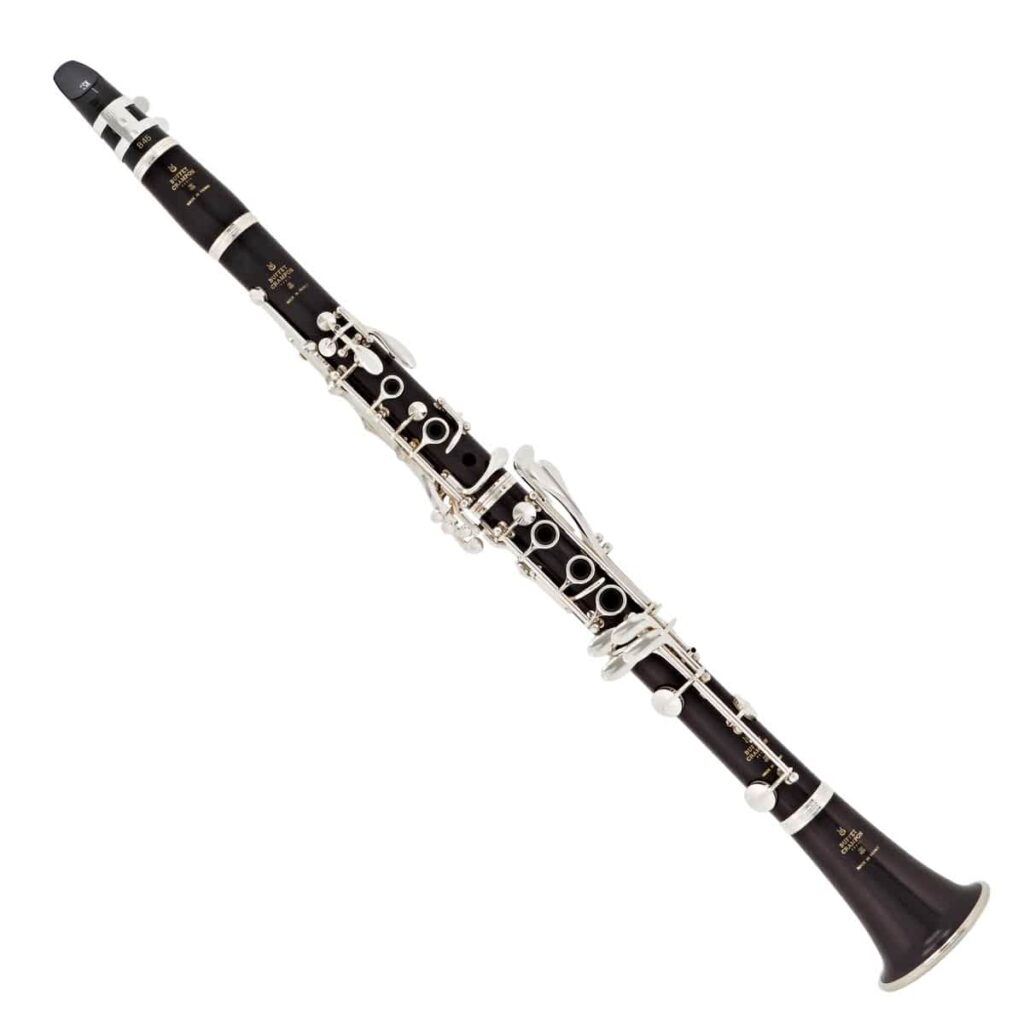
The Bb clarinet is the most common type and is the standard one used in most classical music.
It has a warm, rich tone and is versatile, making it suitable for various musical styles.
It’s also the smallest and lightest of the clarinet family, making it a popular choice for beginners.
A Clarinet
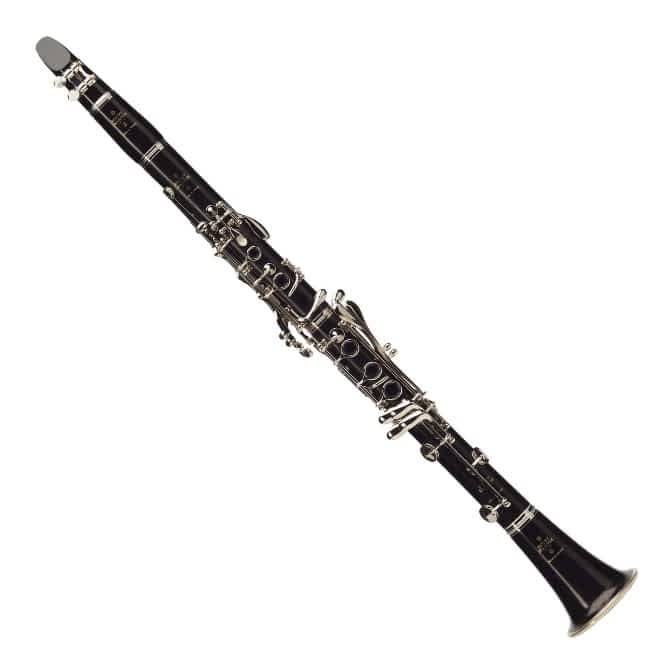
The A clarinet is slightly larger than the Bb clarinet and has a slightly lower pitch.
It’s often used in orchestras, particularly classical music, where it plays the higher register parts.
It has a brighter, more focused tone than the Bb clarinet and is also commonly used in jazz music.
Bass Clarinet

The bass clarinet is a larger and lower-pitched instrument than the Bb clarinet.
It has a deep, rich tone, and is often used to provide a strong bass line in orchestras and concert bands.
It’s also a popular instrument in jazz music, often used to play solos.
Eb CLARINET
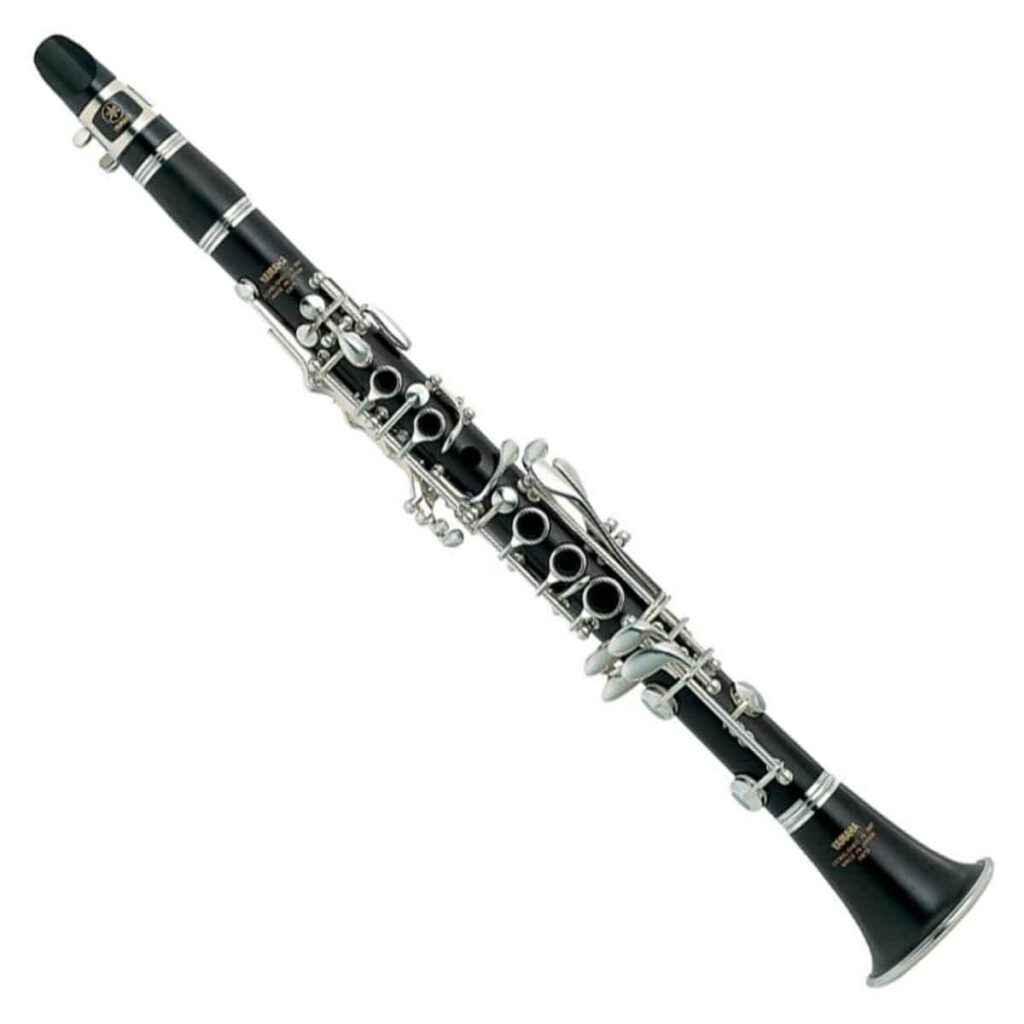
The Eb clarinet is smaller than the Bb clarinet and has a higher pitch.
It has a bright, clear tone and is often used in orchestras and concert bands to play the higher register parts.
It is also sometimes used in jazz music, particularly in smaller ensembles.
Alto Clarinet
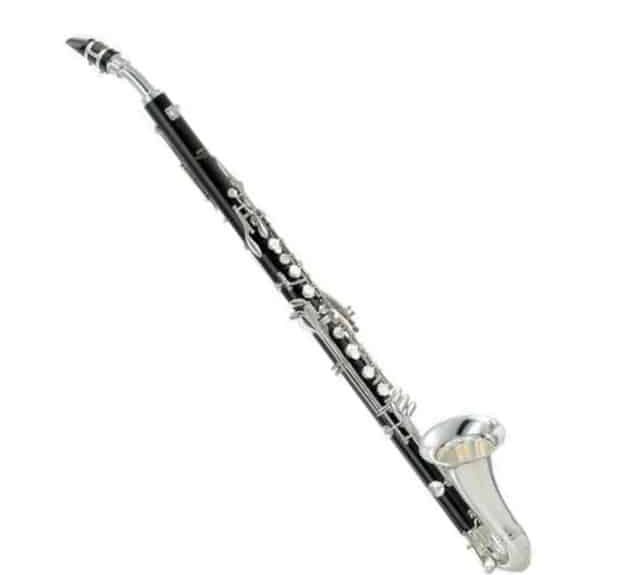
The alto clarinet is larger than the Bb clarinet and has a lower pitch.
Its warm, mellow tone is often used in concert bands to provide a middle voice between the higher-pitched and lower-pitched bass clarinet.
Uncommon Clarinet Types
While the Bb and bass clarinets are the most popular types, the clarinet family has eleven different types of clarinets. Some of these clarinets are uncommon and rarely used in musical compositions.
However, they are still important in the clarinet family as colour instruments.
Here are some of the uncommon types of clarinets:
The C clarinet is a transposing instrument pitched one whole tone below the Bb clarinet. It has a brighter and more focused sound than the Bb clarinet and is commonly used in orchestral and chamber music.
The D clarinet is a transposing instrument pitched a whole tone above the C clarinet. It has a higher and brighter sound than the C clarinet and is commonly used in classical and folk music.
The Eb clarinet is a transposing instrument pitched a minor third above the Bb clarinet. It has a brighter and more piercing sound than the Bb clarinet and is commonly used in marching bands and jazz music.
The F clarinet is a transposing instrument pitched a fifth above the Bb clarinet. It has a mellow and sweet sound and is commonly used in orchestral and chamber music.
The G clarinet is a transposing instrument pitched a whole tone above the F clarinet. It has a brighter and more focused sound than the F clarinet and is commonly used in classical and folk music.
The alto clarinet in Eb is a larger version of the Eb clarinet. It has a deeper and more mellow sound than the Eb clarinet and is commonly used in concert bands and jazz music.
The Bb bass clarinet is a larger version of the Bb clarinet. It has a deeper and more resonant sound than the Bb clarinet and is commonly used in orchestral and wind band music.

Other Types of Clarinets
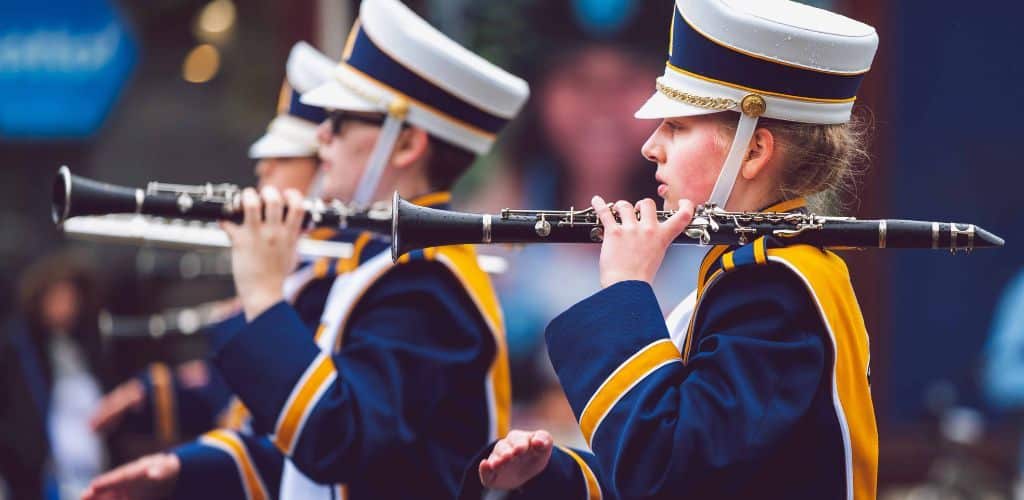
In addition to the main types of clarinets, there are several other kinds. Though they’re not as common, most have become completely obsolete. You will rarely hear any of these.
These clarinets have varying degrees of use and popularity, but none are utilized as often as the more common clarinets listed above.
Except for the octo-contrabass, none of these clarinets are pitched in Bb or Eb. That’s most likely why they have not gained as much popularity as the main types of clarinets.
The Piccolo clarinet is pitched in Ab and is very small, making it difficult to play.
The D clarinet is pitched a whole step lower than the standard and is used mainly in orchestral music.
The C clarinet is pitched a whole step higher than the standard clarinet and is used mainly in chamber music.
The basset clarinet and basset horn were popular in the classical era and have a longer body, allowing them to play lower notes.
The octo-contrabass clarinet is the largest and lowest-pitched clarinet, and is rarely used due to its size and difficulty to play.
While these clarinets may not be as common, they still have their place in certain types of music.
3 Clarinet Recommendations for Beginners
Elkhart 100CL Student Clarinet

FEATURES: Made with ABS and Ebonite composite construction, providing excellent and authentic intonation
OTHER INFO: Comes with a silver-plated keyword
Elkhart 100CL Student Clarinet
- Has a 17-key Boehm system
- Easy to play and can withstand heavy handling
- Comes with a backpack-style canvas carry case
- The thumb-rest is not adjustable
When you click ‘Check Price’, you’ll see there are loads of great places to buy this item. Our personal favorite is Sweetwater for the US, and Thomann and Gear4Music for the UK & Europe.
They are the largest music retailers, with excellent customer service, competitive prices, really fast shipping, and the longest guarantees.
The professional musician who wrote this article combined many things,
from the product build, manufacturer’s reputation through to feedback
from other users, to create our famous TedScore™.
Yamaha YCL255S Student Bb Clarinet

FEATURES: Durable body with an attractive matte finish
OTHER INFO: Has an adjustable thumb-rest for proper technique
Yamaha YCL255S Student Bb Clarinet
- With a new bell with improved response and projection
- Comes with silver-plated nickel silver keys for added luxury
- Perfect for wind bands or orchestras
- Comes with a lightweight carry case and a Yamaha 4C mouthpiece
- A little expensive for a beginner instrument
When you click ‘Check Price’, you’ll see there are loads of great places to buy this item. Our personal favorite is Sweetwater for the US, and Thomann and Gear4Music for the UK & Europe.
They are the largest music retailers, with excellent customer service, competitive prices, really fast shipping, and the longest guarantees.
The professional musician who wrote this article combined many things,
from the product build, manufacturer’s reputation through to feedback
from other users, to create our famous TedScore™.
Buffet Prodige Bb Clarinet

FEATURES: Built with a bore design based on the popular E13 clarinet from Buffet
OTHER INFO: Created from co-polymeric ABS instead of wood, which requires less maintenance
Buffet Prodige Bb Clarinet
- Its design is simple, featuring 17 keys and 6 rings, which are standard for clarinets
- Features the quintessential Buffet design
- Includes everything needed to get started
- Higher price range for a beginner clarinet
When you click ‘Check Price’, you’ll see there are loads of great places to buy this item. Our personal favorite is Sweetwater for the US, and Thomann and Gear4Music for the UK & Europe.
They are the largest music retailers, with excellent customer service, competitive prices, really fast shipping, and the longest guarantees.
The professional musician who wrote this article combined many things,
from the product build, manufacturer’s reputation through to feedback
from other users, to create our famous TedScore™.
Clarinet Instrument Family
Summary

The clarinet family is a versatile and beautiful group of instruments that has been making music for centuries.
Did you know the clarinet family is the largest woodwind family out there?
From the deep BB♭ contrabass to the high-pitched E♭ soprano, each instrument has a unique sound that can fit any style of music. The B♭ clarinet is the most commonly used and can be heard in everything from orchestras to jazz bands.
If you’re considering playing the clarinet, don’t forget to choose the right one.
Think about what kind of music you want to play, your skill level, and your budget. And don’t be afraid to try out different types of clarinets before making your final decision.
So why not grab one and start creating some beautiful music today?
Before you go…
There are plenty of ways to take your clarinet playing experience to the next level!
Jump into the next article for the 11 Must-Have Accessories for Woodwind Players to add to your toolkit.
FAQ's
The clarinet belongs to the woodwind instrument family, including the flute, saxophone, and oboe. It’s one of the woodwind family’s most popular and versatile instruments.
The three main types of clarinet are the B♭ clarinet, the A clarinet, and the E♭ clarinet. The B♭ clarinet is the most common type and is often used in orchestras and jazz bands.
The clarinet is related to the saxophone and the flute, as they’re all members of the woodwind family of instruments. They all produce sound by blowing air across a reed or an edge, vibrating and producing sound.
The recommended replacement for an E flat clarinet is a B flat clarinet. It’s better than using a flute because it has a similar range and timbre to the E flat clarinet.











Loved your segment on bass clarinets! Their sound is so deep and beautiful, perfect for jazz!
nice read but gotta say, saxophones have a way cooler vibe than clarinets. no offense to clarinet players, but i think sax is where it’s at for jazz and stuff. change my mind?
I get where you’re coming from, but the clarinet has its unique charm, especially in classical and chamber music settings. They can be quite versatile in jazz too, remember Benny Goodman?
Fascinating overview of the clarinet family. I’ve played the Bb clarinet for over a decade in various settings, from solo recitals to ensemble performances. It’s intriguing to learn about the alto and bass clarinets’ roles in expanding the harmonic and textural capabilities of the clarinet family. The inclusion of uncommon clarinet types also adds a rich layer to understanding the instrument’s versatility. This kind of information is invaluable for anyone looking to deepen their knowledge of woodwind instruments.
Hey Kymia, super helpful article! I’m just starting out on my music journey and thinking about playing the clarinet. So, for a total newbie, which one of these beginner clarinets would you say is easiest to start with? Need something not too hard but wanna make sure I get a good sound. Thanks!